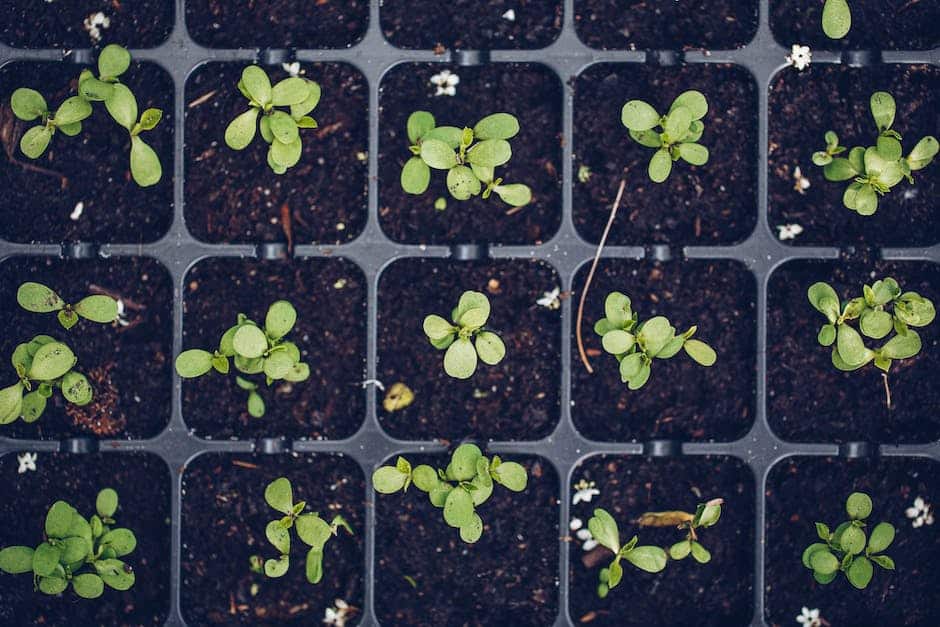What Layers are Necessary for Raised Garden Bed Soil?
When it comes to creating a successful raised garden bed, one of the most important factors to consider is the soil composition. The layers of soil you choose to incorporate into your raised bed will directly impact the health and productivity of your plants. So, what layers are necessary for raised garden bed soil? Let’s explore the various recommendations and options.
The Recommendations:
According to the information provided, there are a few different recommended approaches to layering soil in a raised garden bed. Let’s take a closer look at these recommendations:
Recommendation 1: Topsoil, Compost, and Sand or Grit
One source suggests that the best soil layers for a raised garden bed include a combination of topsoil, compost or organic matter, and sand or grit. It is recommended to mix the compost and topsoil together before filling the bed, or alternatively, layer a thin layer of compost on top of the soil and allow it to gradually mix in over time (source).
Recommendation 2: Organic Layers and Compost
Another source suggests a more layered approach to raised bed gardening soil. The recommended layers include:
- Bottom lining: Use an organic layer such as wood or an artificial lining such as hardware cloth to prevent weeds and ensure healthy soil.
- Base layer: Use heavier logs, branches, and other wooden detritus, accounting for around 40% of the total bed volume.
- Second layer: Use smaller pieces of wood, broken twigs, smaller branches, and possibly small stones or rocks for drainage, accounting for around 20% of the total bed volume.
- Soft waste layer: Use grass clippings, kitchen waste, vegetable waste, leaves, and other organic matter that has not yet been composted, accounting for around 25% of the total bed volume.
- Compost layer: Use homemade compost, ideally from your own compost bin or bucket, accounting for around 10% of the total bed volume.
- Topsoil layer: Use high-quality soil, accounting for the remaining 5% of the total bed volume (source).
Opinions and Analysis:
Based on the information provided, it is clear that there are different opinions and recommendations when it comes to the necessary layers for raised garden bed soil. The first recommendation focuses on the combination of topsoil, compost, and sand or grit, while the second recommendation includes a more layered approach with organic layers and compost.
Both approaches have their merits and can be effective in creating a healthy growing environment for your plants. The key is to consider the specific needs of your plants, the local climate, and the resources available to you.
The first recommendation with topsoil, compost, and sand or grit provides a balanced mix of organic matter, nutrients, and drainage. The compost helps enrich the soil and provides essential nutrients for plant growth, while the sand or grit aids in drainage, preventing waterlogging and root rot.
On the other hand, the second recommendation with organic layers and compost focuses on building a more sustainable and self-sufficient system. The various organic layers help create a natural habitat for beneficial organisms, improve soil structure, retain moisture, and gradually release nutrients as they break down. This approach is particularly beneficial for long-term soil health and fertility.
Ultimately, the choice of layers for your raised garden bed soil will depend on your specific goals, available resources, and personal preferences. It is important to experiment and find the approach that works best for you and your plants.
Conclusion:
When it comes to the necessary layers for raised garden bed soil, there is no one-size-fits-all answer. The recommendations vary from a simpler mix of topsoil, compost, and sand or grit to a more layered approach with organic materials. Both approaches have their advantages and can lead to successful gardening outcomes.
Ultimately, the key is to focus on providing a balanced and nutrient-rich growing medium for your plants. Consider factors such as drainage, organic matter content, and long-term soil health when deciding on the layers for your raised garden bed soil.
Related Websites:
FAQs:
Q: What are the necessary layers for raised garden bed soil?
To ensure optimal soil composition and drainage, raised garden beds require several layers. These include a base layer for drainage, a weed barrier layer, a compost layer for nutrients, a topsoil layer for plant growth, and a mulch layer for moisture retention and weed prevention.
Q: What is the purpose of the base layer in raised garden beds?
The base layer in raised garden beds serves to improve soil drainage. Materials such as gravel or coarse sand are commonly used in the base layer to allow excess water to drain properly, preventing waterlogging and root rot.
Q: How does a weed barrier layer help in raised garden beds?
A weed barrier layer plays a crucial role in preventing weed growth within raised garden beds. Options such as landscape fabric or newspaper can be used as effective weed barrier materials. By blocking weed seeds from reaching the soil surface, it helps maintain a weed-free gardening environment.
Q: Why is compost important in raised garden bed soil?
Incorporating a compost layer into raised garden bed soil is vital for plant health. Compost provides essential nutrients, improves soil structure, and enhances water retention capabilities. It enriches the soil, creating a favorable environment for robust plant growth.
Q: What is the role of a mulch layer in raised garden beds?
A mulch layer in raised garden beds serves multiple purposes. It helps retain moisture in the soil, reducing the frequency of watering. Additionally, it acts as a natural weed suppressant, inhibiting weed growth. Wood chips or straw are popular choices for mulch materials.






